On Earth, there are nearly 10,000 different species of birds that range in size and shape from the small bee hummingbird to the enormous ostrich.
Most people, when they think of large birds generally picture the ostrich or the emu, which are enormous, flightless birds,. Although it may be difficult to imagine, some of the world’s largest living birds can actually fly. The largest flying bird on this list weighs more than 40 lbs, and the others can grow to at least 26 lbs in weight.
The wandering albatross is the largest flying bird in the world based on a wingspan. More than any other living bird, this enormous bird has a wingspan that can reach a maximum of 12 feet. And the great bustard weighs up to 40 pounds, making it the heaviest flying bird in the world.
Aren’t those some really enormous wingspans? Continue reading if you want to learn more about large birds. The list of some of the world’s largest birds (by wingspan and weight) is listed below.
1. Wandering Albatross
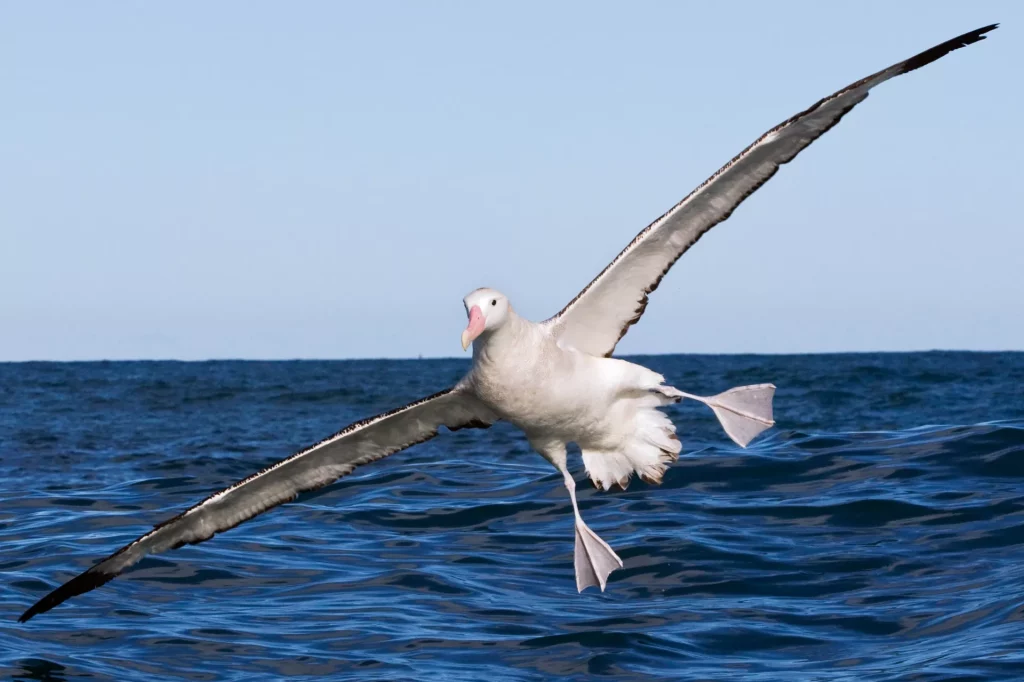
With the largest wingspan that may reach up to 12 feet, the wandering albatross takes the top position for the biggest bird.
The wandering albatross has a big wingspan, yet it is not the heaviest bird in the world. It only weighs between 14 and 26 pounds. There are various regions of the Southern Hemisphere where the wandering albatross is native.
It actually spends the majority of its time at sea and only comes ashore to breed once every two years.
They can dynamically soar for hours over the ocean thanks to their large wingspans without ever having to flap their wings.
A Wandering Albatross has an elbow-lock system that keeps its wings locked in the extended soaring position without requiring any energy to maintain that position, allowing them to fly up to 600 miles per day and round the globe in just 46 days.
Interesting Fact: Engineers at NASA are developing an unmanned aerial vehicle (UAV) based on the Wandering Albatross’ capacity to soar passively for extended periods of time.
- Scientific Name: Diomedea exulans
- Weight: 19 lb (8.4 kg) average.
- Wingspan: 12 ft 2 in (3.7 m)
- Range: Off the east coast of New Zealand’s south island’s Kaikoura Peninsula, are South Georgia Island, Crozet Islands, Kerguelen Islands, Prince Edward Islands, and Macquarie Island.
2. Great White Pelican
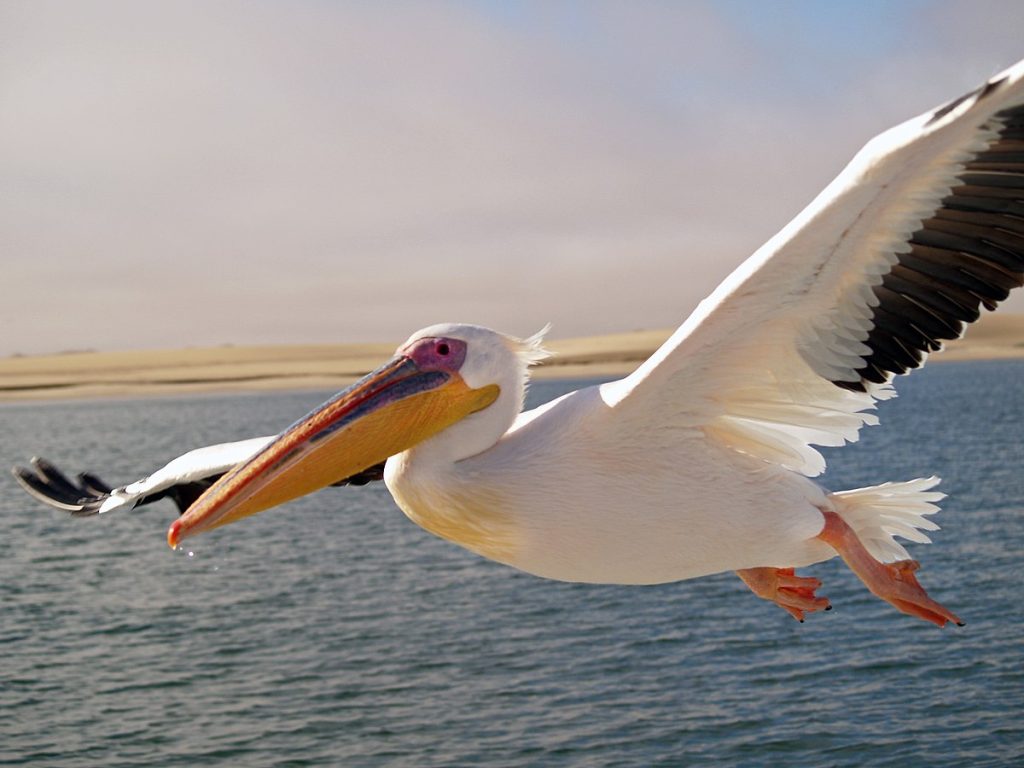
The Great White Pelican is one of the largest flying birds in the world that is found in the shallow swamps of Africa. On this list of the largest birds in the world in terms of wingspan, the great white pelican comes in second place with its enormous 12-foot wingspan.
This bird can be found from Southeast Europe through Asia and Africa in marshes and shallow lakes. Breeding primarily takes place in South Africa, although it can also happen in Northern Greece, Russia, and Turkey.
This bird feeds in groups of six to eight and is a very gregarious creature. A group of birds will circle a school of fish and collectively dip their beaks.
When they raise their heads, the pouch in their beaks pushes the water out, leaving them with a mouthful of delectable fish.
Interesting Fact: This bird species is highly social and often gathers in large flocks
- Scientific Name: Pelecanus onocrotalus
- Weight: 20-22 lb (9.07-9.97 kg)
- Wingspan: 7-11 ft (226-360 cm)
- Range: Shallow swamps of south Africa.
3. Largest Bird of Prey: Andean Condor
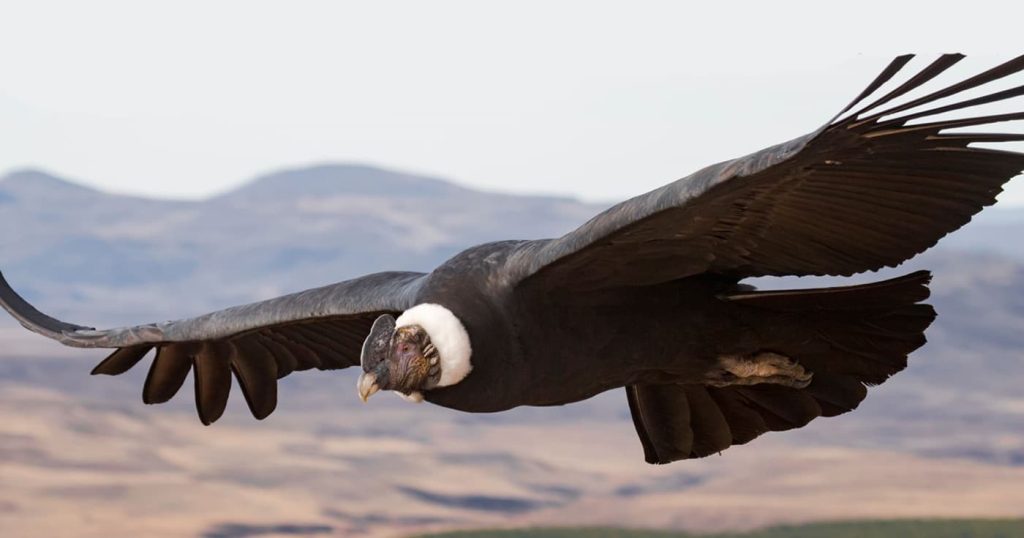
The Andean Condor can make a statement in terms of weight and wingspan. It has an 8- to 10-foot wingspan and may weigh up to 33 pounds, which is only nine pounds less than the great bustard.
The Andean condor takes home the title of the world’s largest raptor.
Andean condors are indigenous to the Andes Mountains in South America, as you have undoubtedly guessed from what their name implies. They do, however, also reside close to the region’s deserts and beaches. They can occasionally be seen in that area’s deserts and along the coast.
The species was once listed as an endangered species in 1973, but because to tenacious conservation efforts, the population has begun to recover somewhat.
Interesting fact: With a lifespan of 60 to 100 years, the Andean Condor is one of the world’s longest-living birds. And it is the only New World vulture in which males and females can be differentiated visibly.
- Scientific Name: Vulture gryphus
- Weight: Males-24 – 33 lbs (11 – 15 kg); Females-18 – 24 lbs (8 – 11 kg)
- Wingspan: 8 ft to 10 ft (2.7 – 3.2 m)
- Range: Throughout the Andes of South America
4. Tristan Albatross

The South Atlantic Ocean is home to the Tristan albatross. It can forage over many different areas thanks to its 11-foot wingspans. On Gough Island, where it nearly exclusively breeds.
While males forage west of the island, you can see them all the way to South America, females feed to the east of the island, where you can see all the way to South Africa.
These gravely endangered birds pair for life and only reproduce every other year. In November, the adult birds come back to the island. In areas of open heath with room to soar upon taking off, females lay their eggs and don’t leave the nesting place until November after they have hatched. It takes this bird ten years to reach sexual maturity.
Interesting Fact: The Tristan Albatross is the third rarest albatross species
- Scientific Name: Diomedea dabbenena
- Weight: 6.8 to 7.3 kilograms
- Wingspan: 3.05 m (10.0 ft)
- Range: Argentina, Brazil, Uruguay, South Africa, Angola, Namibia
5. Southern Royal Albatross
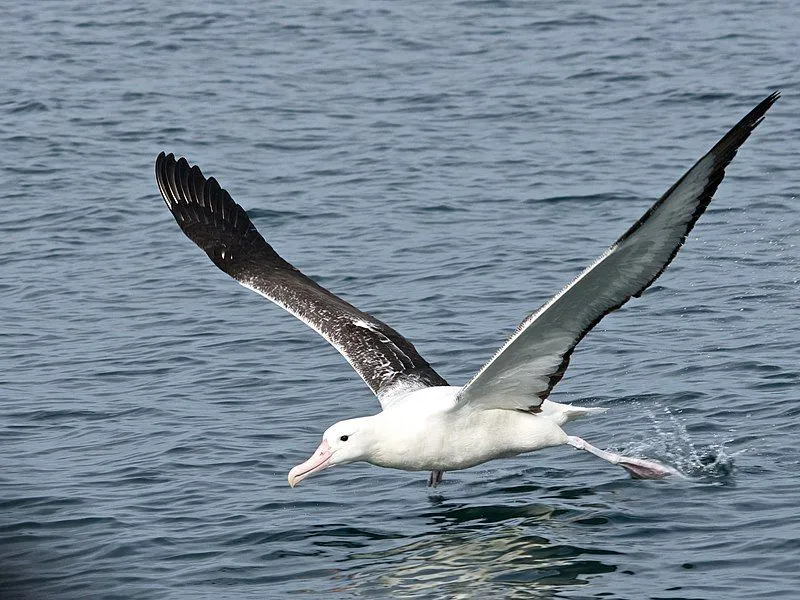
One of the largest flying birds in terms of wingspan is the Southern royal albatross, which has a span of 12 feet. It spends most of its time in South American seas, but when it’s time to lay eggs, the majority of individuals return to subantarctic Campbell Island.
They travel around the world, from South America to Campbell Islands. Fish that have been caught at the water’s surface or just below it make up their diet.
Although some southern royal albatrosses have broken up, most breed for life. One to two eggs are laid by females in November, and they hatch in January. Up until the following November, the male and female alternate taking turns taking care of the young.
Interesting Fact: The Southern Royal Albatross can stay at sea alone for months without setting foot on land.
- Scientific Name: Diomedea epomophora
- Weight: Female 7.7 kg (17 lb), Male 10.3 kg (23 lb)
- Wingspan: 9.8 ft (298 cm)
- Range: the west and east coast of southern South America, and also in the waters surrounding New Zealand.
6. Dalmatian Pelican
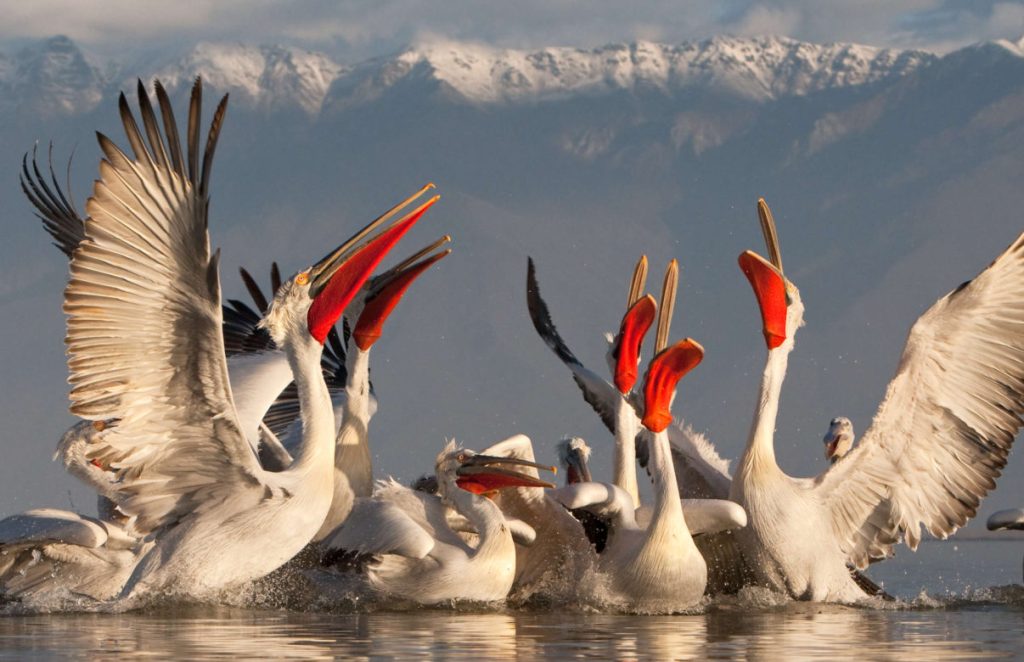
The wingspan of the Dalmatian pelican ranges from 8 to 11.5 feet, and it can weigh up to 33 pounds. Although it is rare, some bustards and swans can grow larger than this pelican.
In numerous regions of Asia as well as all of southeastern Europe, dalmatian pelicans can breed.
In reality, the Dalmatian pelican is the largest pelican species. The Dalmatian pelican population has decreased significantly over time, much like that of the majority of other pelican species.
The IUCN Red List rates the Dalmatian Pelican as Near Threatened due to the declining Dalmatian Pelican population over time.
Interesting Fact: Dalmatian pelicans only stay with the same mate for the duration of the mating season.
- Scientific Name: Pelecanus crispus
- Weight: 16 – 33.1 lbs (7.25 – 15 kg)
- Wingspan: 8 ft – 11 ft 6 in (2.45 – 3.51 m)
- Range: southeastern Europe and east-central Asia
7. Antipodean Albatross
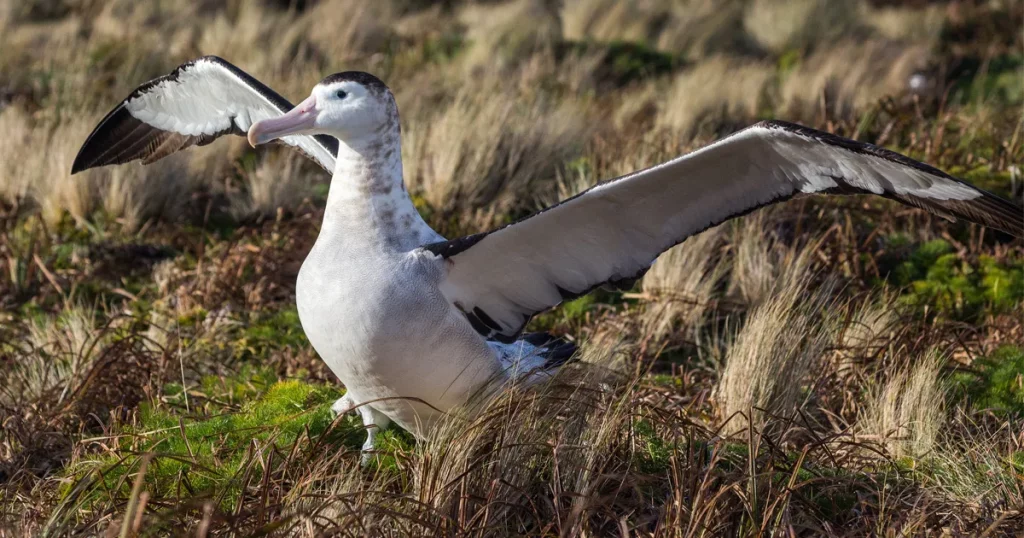
The Antipodean albatross, one of the largest soaring birds, is a threatened species in the South Pacific. All return to New Zealand’s Auckland Islands, Antipodes Islands, and Campbell Island to breed even though you can see them in many places. This bird has a maximum weight of 19 pounds. Its wingspan measures 11 feet.
This bird only lays eggs every two years, and each time it does so, it goes back to the place where it was born. These birds do not reach adulthood and sexual maturity until they are roughly 250 days old and seven years old, respectively. The task of incubating the eggs and nurturing the young is shared by both sexes.
Interesting Facts: The Antipodean albatross leads the group of amazing albatross species found in Aotearoa.
- Scientific Name: Diomedea antipodensis
- Weight: 4.5 – 8.5 kg.
- Wingspan: 11 ft (335.28 cm)
- Range: Across the South Pacific from Australia to as far as Chile
8. Northern Royal Albatross
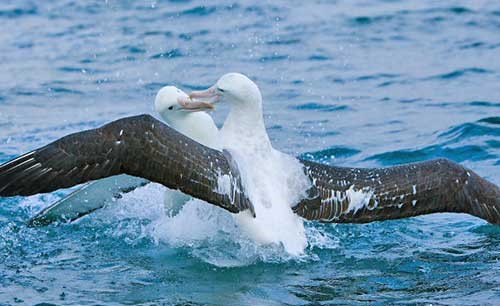
The northern royal albatross, often known as the toroa, has a 10 foot wingspan. This seabird, which is slightly smaller than its southern relative, can be identified by its wings, which have an upper surface that is primarily dark.
The Chatham Islands, Taiaroa Head, and South Island of New Zealand are home to this endangered species. Although there is certainly cause for concern, these birds are becoming more numerous.
This is mostly because of conservation initiatives that make nesting simpler and safer. On warmer days, they have a sprinkler system installed at their preferred nesting location at Taiaroa Head to prevent heat sensitivity.
They also include diligent employees inserting practical cotton balls soaked in peppermint scent in nests to cover the smell of albatross eggs and prevent flystrike.
This bird, which weighs around 16 pounds, waits until it is eight years old to mate. Despite this, it has a rather long lifespan of up to 40 years. It consumes fish that are floating at the water’s surface and are dead or dying.
Elaborate mating rituals are carried out by these birds in the air and on the water. On the coastline, they erect sizable nests made of plant materials. Both the male and the female contribute to egg incubation and child-rearing.
- Scientific Name: Diomedea sanfordi
- Weight: 6.2 to 8.2 kg (14–18 lb)
- Wingspan: 10 ft (270 to 305 cm)
- Range: At Taiaroa Head on New Zealand’s Otago Peninsula and on Enderby Island in the Auckland Islands.
9. Maribou Stork
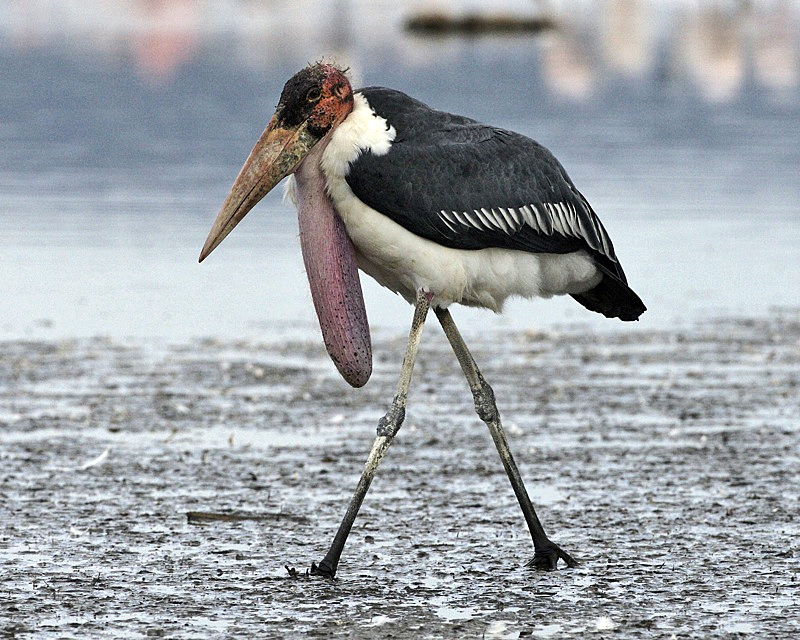
South of the Sahara Desert, in damp and arid regions, resides the Marabou stork, also known as the undertaker bird. This bird, which usually inhabits landfills, can weigh up to 17 pounds. When viewed from the back, this black bird appears to be sporting white underwear.
Only a few instances of birds having wingspans up to 13 feet have been documented. When these birds are four years old, they are sexually mature, and they form lifelong bonds with their partners.
They are scavengers that frequently occupy areas close to populated areas.
These storks have a lifespan of up to 20 years in captivity, but it is uncertain how long they would live in the wild. In Marabou Storks, the leg and toe bones are hollow.
This kind of bone structure is essential for flight because of this. Additionally, unlike some other birds, they do not store food in the pouches on their throats. Their protruding neck sacks serve as mate magnets.
Interesting Fact: One of the animals with the ugliest looks in the entire animal kingdom.
- Scientific Name: Leptoptilos crumeniferus
- Weight: 9 kg (20 lbs.)
- Wingspan: 12 ft (365 cm)
- Range: Found throughout Sub-Saharan Africa.
10. Kori Bustard
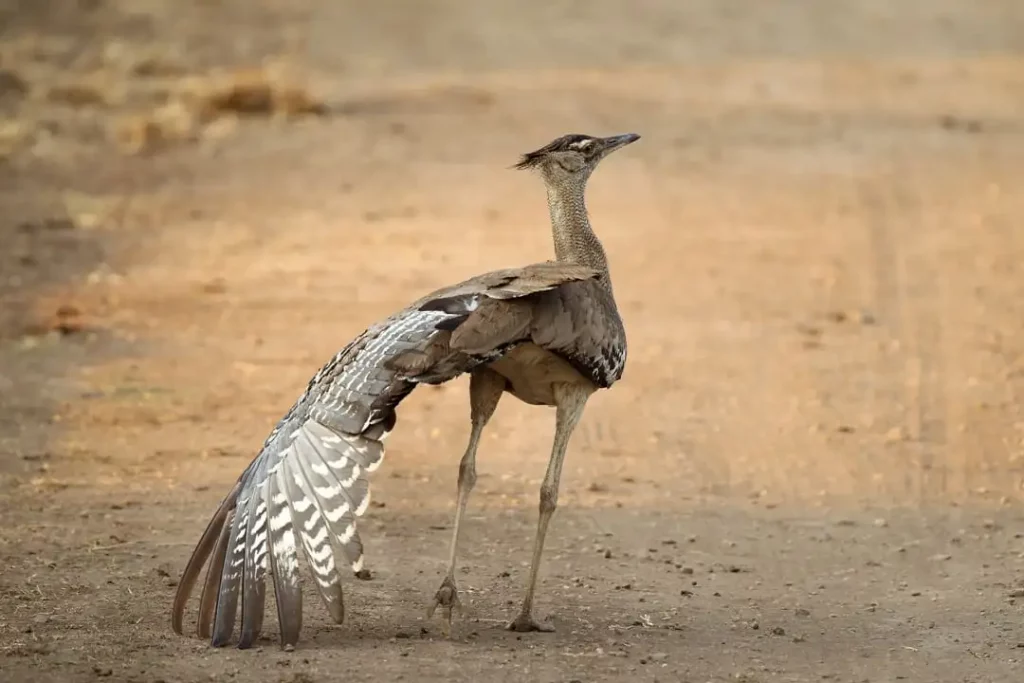
Some of the world’s heaviest birds are bustards. With a weight range of 11 to 40 pounds, the kori bustard is only second to the great bustard in terms of size.
Even though it only has a 7-9 foot wingspan, it is one of the heaviest birds known to man.
Although officially flying birds, kori bustards are native to South Africa and are so hefty that they prefer to stay on the ground. They typically don’t fly unless they are seriously endangered or feel threatened.
Interesting Facts: Male Kori Bustards can expand their esophagus up to four times its regular size during the mating season.
- Scientific Name: Ardeotis kori
- Weight: 15 to 40 lb (7 to 18 kg)
- Wingspan: 7.5 ft to 9 ft (230 to 275 cm)
- Range: Southern Africa; common in Botswana, Namibia, southern Angola, and southwestern Zambia
11. Whooper Swan
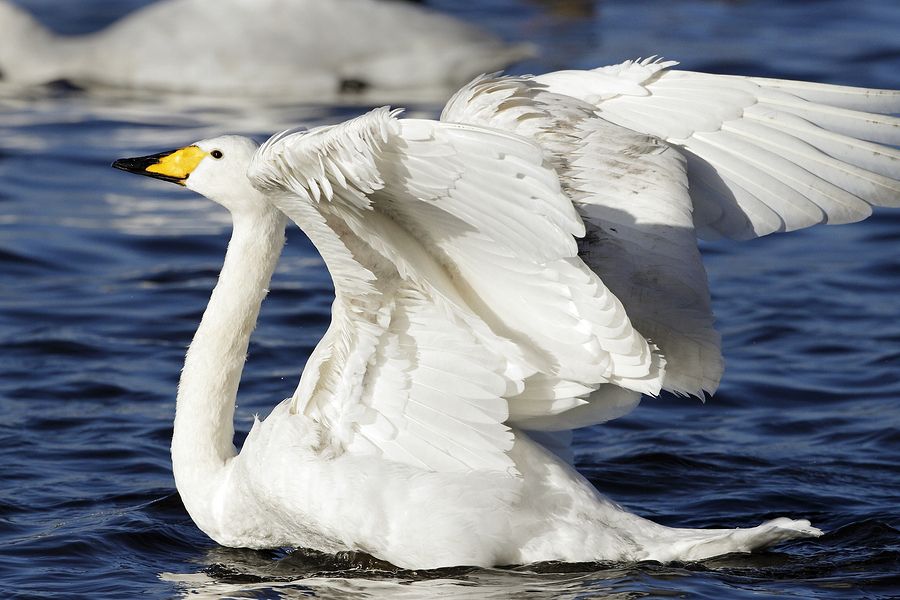
The whooper swan is a huge bird, just like its cousin, the trumpeter swan. It weighs between 16 and 30 pounds and has a wingspan between 6 and 9 feet.
Although they have been observed to move as far as western Alaska, these swans are mostly found in portions of eastern Asia and southern Europe.
Additionally, whooper swans will fly from Iceland to the UK in the winter to breed in wetlands and estuaries. Whooper swans may travel hundreds of miles in a single day, similar to the albatross.
They don’t stop until they arrive when they fly from the UK to Iceland and the other way around.
Interesting Facts: Like a person’s fingerprint, the Whooper Swan’s yellow markings on its bill are unique to each individual.
- Scientific Name: Cygnus cygnus
- Weight: 16 – 31 lbs (7.4 – 14 kg)
- Wingspan: 6 ft 3 in – 9 ft (2.05 – 2.75 m)
- Range: Southern Europe and Eastern Asia
12. Eurasian Black Vulture

Although vultures are not typically thought of as the most attractive birds in the world, the Eurasian Black Vulture stands out in the large bird category.
Eurasian black vultures are most frequently observed in regions of Europe and Asia, as their name suggests. The Eurasian black vulture population is steadily declining, much like the Dalmatian pelican. It has earned a spot on the list of nearly extinct species.
The Eurasian Black Vulture is indigenous to regions of Europe and Asia, as its name suggests. The IUCN Red List classifies the Eurasian Black Vulture as a Near Threatened species because of the declining population.
Interesting Fact: Because of its unique hemoglobin, the Eurasian Black Vulture can efficiently absorb oxygen while flying at great altitudes.
- Scientific Name: Aegypius monachus
- Weight: Males-14 – 25 lbs (6.3 – 11.5 kg); Females-17 – 31 lbs (7.5 – 14 kg)
- Wingspan: 8 ft 2 in – 10 ft 2 in (2.5–3.1 m)
- Range: Across southern Europe and Asia from Span to Korea
13. Shoebill
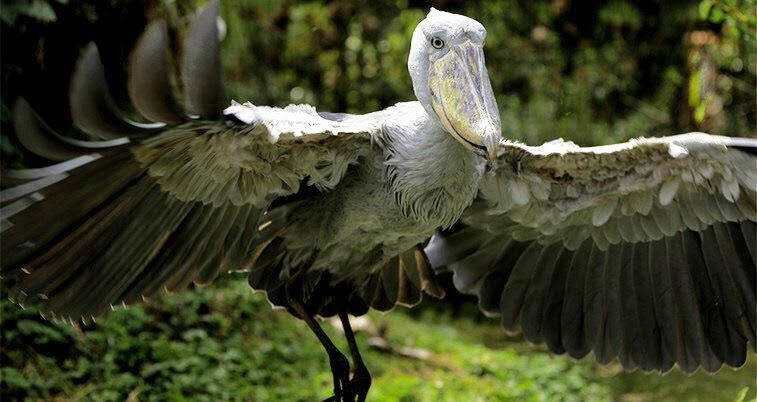
A huge bird that resembles a stork, the shoebill is no longer included in the Ciconiiformes group of storks. It seems to share a stronger genetic affinity with herons and pelicans.
The wingspan of a shoebill is roughly eight feet broad. and maybe between 11 and 12 lbs.
It eats fish and lives in the wetlands of tropical east Africa. Since fish surface when submerged hippos pass by, they frequently profit from hippo activity.
- Scientific Name: Balaeniceps rex
- Weight: Males weigh 12 lb (5.6 kg) and females 11 lb (4.9 kg)
- Wingspan: 7.5 to 8.5 ft (230 to 260 cm)
- Range: East Africa
14. Trumpeter Swan
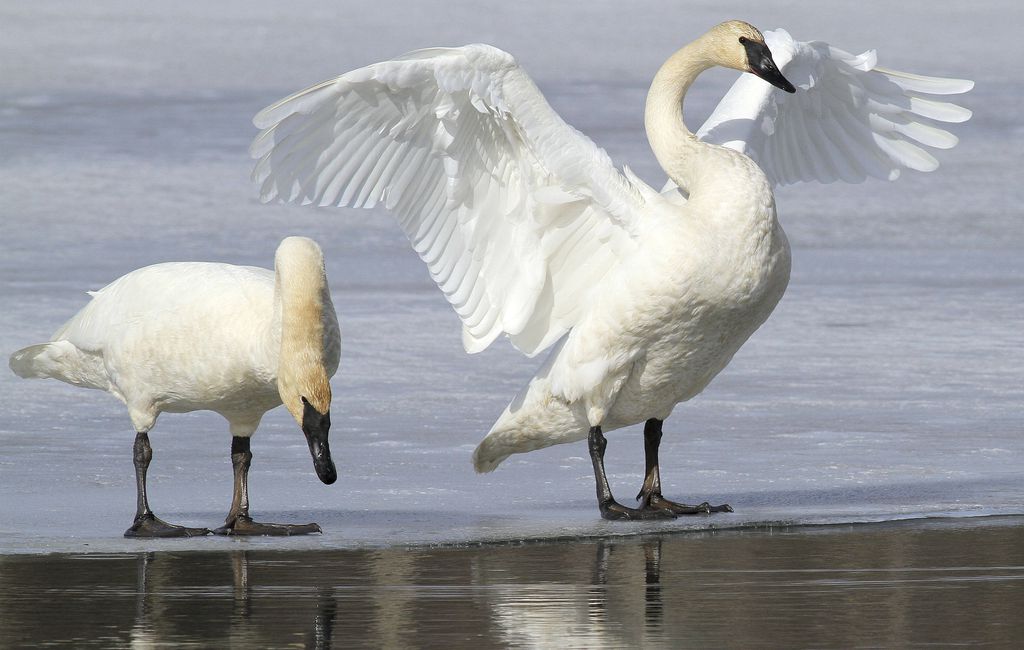
The trumpeter swan is no different from the majority of swans in that it is a sizable bird. The trumpeter swan is the heaviest living bird that is native to North America, with a wingspan of 6 to 8 feet and a weight range of 15 to 30 pounds.
They once nestled all across North America, but as people began to settle on the continent, their populations drastically decreased over time.
Interesting Fact: Trumpeter Swan is the largest North American bird and they require a space of 300 feet to take off.
- Scientific Name: Cygnus buccinator
- Weight: 5 to 30 lb (7 to 13.6 kg)
- Wingspan: 6 ft to 8 ft 2 in (185 to 250 cm)
- Range: North America
15. Himalayan Vulture
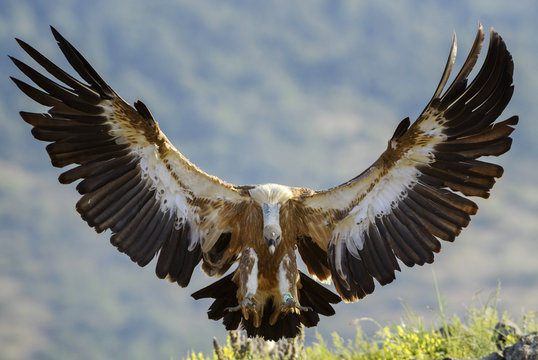
The Himalayan Vulture is an expert in flying at great altitudes. These high mountains, which are home to the highest peaks in the world, are where you may frequently observe this bird gliding at 5,000 meters above sea level.
These big birds soar effortlessly thanks to their enormous wings and warm air pockets.
The traditional North-South or South-North migration patterns are not followed by these species.
Instead, depending on the season, the Himalayan Vulture merely adjusts its altitude to meet its eating requirements.
- Scientific Name: Gyps himalayenis
- Weight: 18-26 lb (8-12 kg)
- Wingspan: 9-10 ft (270-300cm)
- Range: Central Asia, specifically the Himalayan Mountains and the Tibetan Plateau
Hugues Beaufrere is the Exoticpetia’s senior writer and reptile expert. He has been fascinated by reptiles and monkeys since he was a kid and had years of experience in herpetology and primatology. He has cared for various kinds of Monkeys, Lizards and Reptiles and loves to share his knowledge and passion with others.


